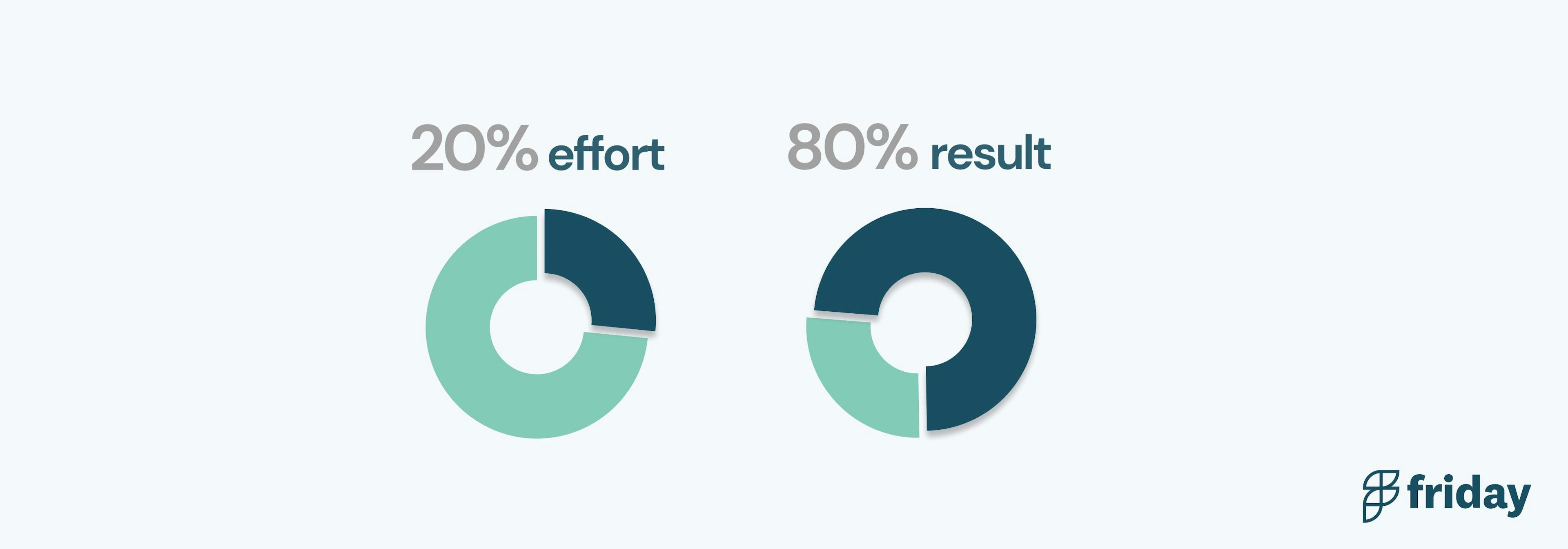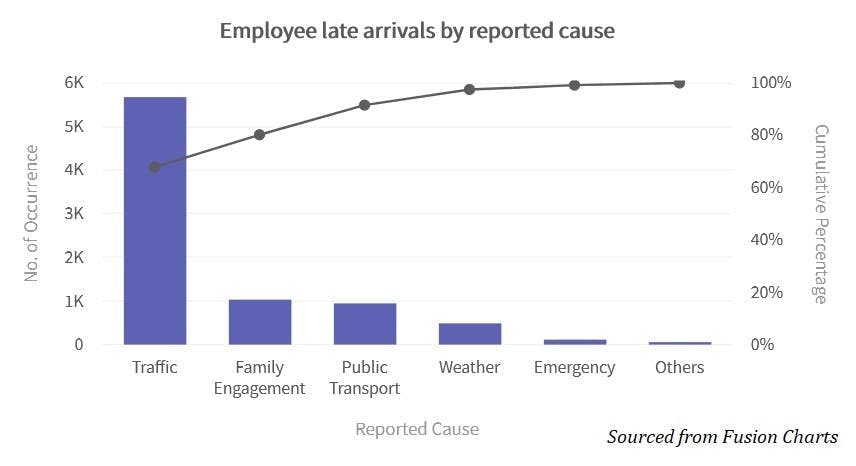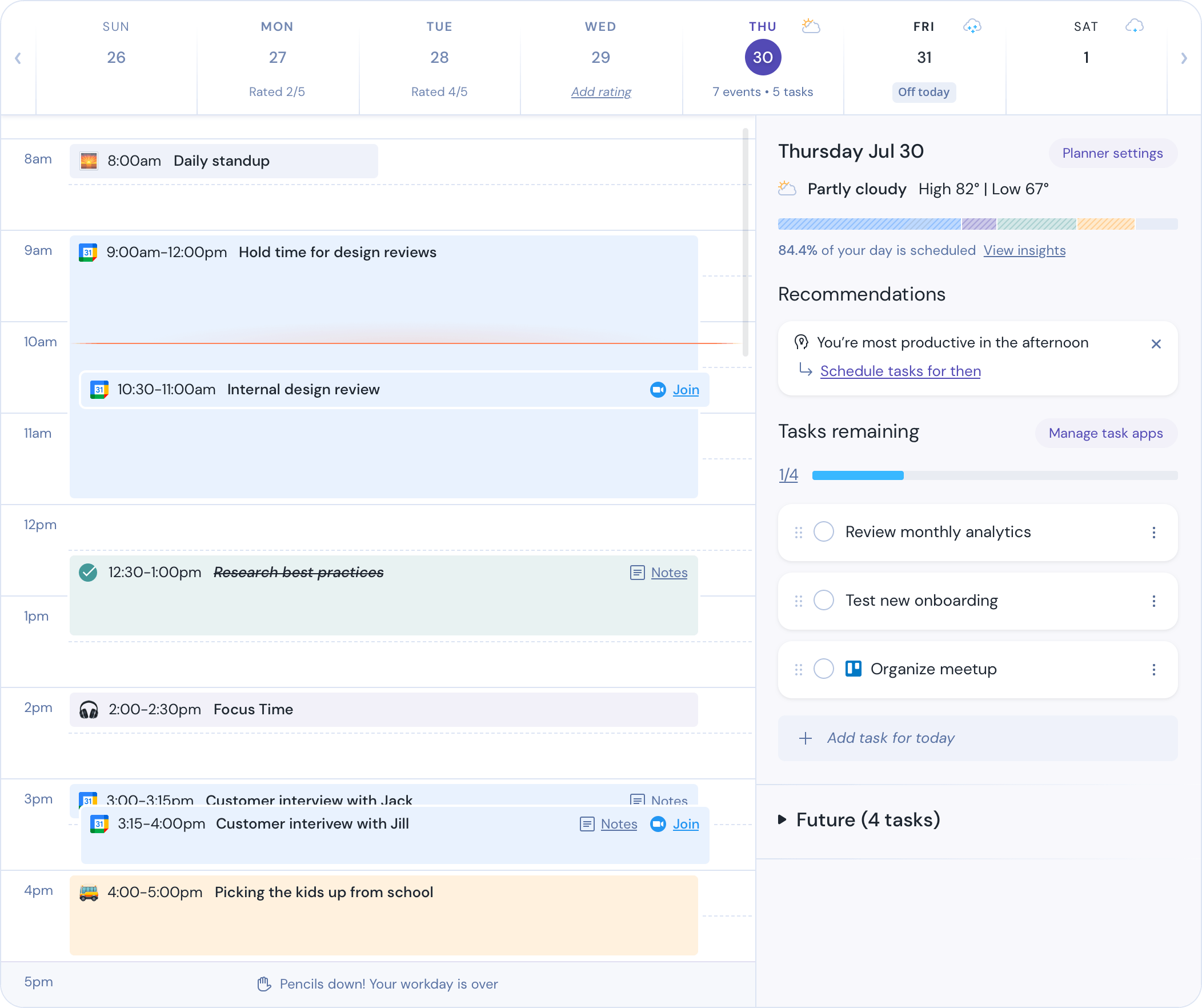The 80/20 Rule: How The Pareto Principle is a Productivity Game-Changer

Once you start looking, you’ll find the 80/20 practically everywhere. Even tech conglomerate Microsoft finds use for it, after discovering that 80% of reported bugs were from the same 20% of source code.
In fact, the most successful entrepreneurs have been able to get ahead in their businesses by taking advantage of the 80/20 method, delegating their unprofitable 80% to focus on the lucrative 20%.
If you’ve got a similar itch, keep going to learn precisely how this time-management system can bring you rewards and riches.
The Origin of the 80/20 Rule
Before many knew this phenomenon by the trendier 80/20 rule, it held the solitary title of the Pareto principle, after the Italian economist and mathematician who proposed it, Vilfredo Pareto.
Back in 1897, Pareto was mulling around in his garden, observing pea pods, of all things. After one harvest, he measured that 80% of grown peas had come from 20% of the pods.
In 1906, he extrapolated the numbers to then show that 80% of Italy's land was owned by 20% of Italian families, which seemed rather odd to him, as he had assumed a much more equal distribution. Ever since then, his work has been applied to other areas including business, technology, art and even sport.
Pareto realized that his pattern was generally true for human behavior: the smaller proportion of our actions and effort leads to the majority of results and reward. He swiftly gave this some old-timey fanciness, naming it "the vital few and trivial many.”
What is The 80/20 Rule?
In plain terms, the 80/20 rule is the concept that 80% of output comes from 20% of input.
It’s far easier to see it in real world terms: 80% of revenue comes from 20% of clients; 80% of sales are facilitated by 20% of a sales team; 80% of company profits stem from 20% of their products/services, and so on.
As for personal productivity, the Pareto principle can be used to maximize your efficiency by concentrating your efforts. Before we get stuck in, it’s crucial that we understand this key distinction:
The 80/20 rule does not mean most of your effort has no consequence, or that you can get away with doing less. Oppositely, it suggests that we should give our energy and resources to priority work items that have a bigger impact on our desired results. You are not decreasing input, you are rerouting it.
Let’s get visual! A Pareto chart is a combination bar-line graph that maps out frequency and cumulative value.

In the areas of occupational health and safety, such a chart could illustrate the main causes of injury - if 80% of worker accidents are from falling, companies then know to install safeguards like railing and signage.
In quality control, the chart might show the nature of product defects – if 80% of defects are from warping, a manufacturer knows to concentrate on adjusting temperature or pressure.
Going back to productivity, we are still trying to allocate our resources in such a way as to have the largest effect and resolve the highest proportion of problems.
The best way to do this is to ask:
- What are my main sources of output? (Hint: it’s probably not emails)
- What are the 3, 5 or 10 most important tasks I should work on this week?
- What are my special tasks that bring in the bulk of my results?
After you’ve established this – made a mental Pareto chart, in a sense – work on these items determinedly until they are complete.
The best way to do this is to first write down your goals and priorities. Once you know the direction, you can set a course.
In actively striving towards goals, you’ll quickly notice the bad habits that slow you down, those low-value activities that, despite perhaps becoming routine tasks, do not really bring any long-term benefits and ultimately cause more harm than good.
From these observations, you can find out how to reallocate your efforts, updating your mental Pareto chart and optimizing the work.
For example, if you’re a freelancer, one of your most important responsibilities for generating income is to find new clients. However, there are always little things that pop up. While they may seem very important at first, they turn out to be dead-ends, soaking up way too much time.
Examples include:
- Answering emails from clients who aren’t currently in contract with you
- Spending extra hours working on projects for past clients, instead of finding new ones
- Taking calls from strangers who are seeking advice and giving free consultation
These deceptive tasks might seem quick and insignificant, but they consume a lot of your energy if left unchecked. The 80/20 rule makes you aware of this, encouraging you to focus on the tasks that will give you the greatest return and ignore those which won’t.
Why Should I Use the 80/20 Rule?
Framing your work and life in terms of the 80/20 rule has a lot of noticeable advantages.
1. The 80/20 Rule is a great prioritization tool
It’s challenging to always know whether your time is being spent on the most productive activities, but linking specific actions to later results – input to output – provides some measurable data that will advise you on better productivity practices or lifestyle choices.
2. It Stops You From Spending Time on the Wrong Things
Many people spend their time doing things that are not really important for their success. It’s not just pure procrastination like browsing social media or random sites; oftentimes, actions that we think are productive don’t give a decent trade-off.

When you become conscious of this, by referring to the 80/20 rule, you learn to develop that inner voice that seems to know when you aren’t spending time wisely. You’ll be amazed at how easily you can then stop yourself from stewing in situations that slash productivity.
3. Encourages High-Value Activities
Thirdly, just as Pareto’s law didn’t just apply to peas in his garden, these days it can find its way into other aspects of life, such as health, relationships and personal finance. In the workplace, the philosophy of 80/20 encourages you to work on high-value activities, but it’s no different for home or social life.
As the theory indicates, 20% of your free time results in 80% of positive influence. Therefore, you might be more critical of how you spend time at home, swapping out the TV marathons with quality family activities or a healthy dose of exercise. Similarly, if you understand that 20% of socializing results in 80% of the memorable moments, you will probably be more motivated to organize more weekend excursions, back-yard BBQs or movie nights.
How Do I Use the 80/20 Rule?
If you’ve come this far, you’re probably beginning to wonder how to make use of this magnificent mindset. It’s a simple step-by-step process:
1. Set and Prioritize
As we mentioned earlier, the initial step is to write down your goals and priorities. You’re probably quite accustomed to this, but this time emphasize the value of the targets… what is the true purpose and what results do you both expect and desire?
Think about your top 3 tasks right now. If you’re having trouble ordering them, try something like the Eisenhower Decision Matrix to speed things along. It’s best to physically write your aims down because you can refer to them as needed to track progress and determine your next actions.
2. Conceptualize
Really hone in on the essence of the Pareto principle. Decide what the special tasks bringing in the bulk of results are. Focus on them exclusively, especially when working on a complicated project.
Of course, you can still check your emails and read an industry blog once in a while, but remain aware whether or not you’re currently involved with the 20%, doing one of your super actions.
3. Eradicate Activities
If you can define the smaller group of tasks that bring the most productivity, you also learn the majority of low-value actions that are wasting time.
What are these activities that are bringing no results yet stealing your schedule? Get into the headspace of your most convincing super-villain and exterminate them.
You can take a more gradual approach, if you want. Simply try siphoning a few hours away from these activities and to things that you know offer better value. Test it, too! Reflect on whether doing this makes a positive change on your productivity.
4. Schedule
When you have streamlined your behaviors, you can adopt a daily schedule that translates the 80/20 rule into actual chunks of time. If there’s a priority task that you simply cannot ignore, definitely try time blocking, one of the best methods for single-tasking, to just get things done.
If you like fully committing to one thing and working straight to the finish line, you should check out the Getting Things Done method, too.
Be realistic about your workload and do not schedule more than you can handle. The Pareto principle is all about trimming away the fat, making you a lean, mean productivity machine! Make sure to have manageable deadlines that correspond to the amount of scheduled time, too. If something proves urgent, drop everything else and block more time in for it.
5. Filter
As soon as you’re following a refined, optimized schedule, you can continue to use the 80/20 rule as a filtering tool. Whenever you get emails, phone calls or text messages, glance at them to see if they’re actually important right now. If not, filter them out until you come to allotted break time.
The Pomodoro technique works wonders in this way. As a scheduling tool that promotes short and regular breaks, you can stay focused on the 20% of your super tasks most of the time, but also turn to the 80% when you’ve got downtime.
6. Review
As with any procedure, it’s helpful to include a review stage. If you’ve made significant alterations to how you’re spending your time, you need to measure the effect it had. Now, unless you’re relating to something like revenue, you may not be able to clearly define productivity, but even so you will feel an improvement.
Don’t forget the last part of a review phase, either. Take what you have learned and pour it back into the first step. Connecting results to your steps makes you vastly more effective at setting goals, prioritizing and committing to goals.
Bonus Tips To Make Pareto Proud
You didn’t think we would forget the bonus tips, did you? Here you go:
1. Use Tools that Help
Even though an Italian pea garden seems like the setting of an obscure fairytale, Vilfredo Pareto’s principle isn’t magical. It won’t instantly solve all of your problems, so it’s good to use it alongside other productivity practices and digital aids.
We just discussed the Pomodoro technique, but you can also use tools like Trello, Todoist or Asana to create more comprehensive schedules that keep a closer eye on all of your projects.
Friday integrates with a whole host of task and calendar apps, if you’re looking to dramatically boost your productivity.
How To Roadmap Your Day & Plan Your Tasks with Friday
Use the Friday planner to see all of your meetings, phone calls and appointments, and integrate your existing work apps--like Slack, Teams, Google Calendar, Microsoft Outlook, Asana, Trello, Todoist, ClickUp, and moree.
By using Friday and its integrations, you create a stellar schedule that is synced together. Track all of your tasks from the most popular project management apps. Drag and drop your tasks into the times on your calendar.

Best Features
- Prioritize your tasks in the Friday planner. Set times to do your most important tasks
- See your daily schedule, including meetings, next to your to-do list
- Import personal and work tasks from the task management apps you already use--like Trello, Asana, Todoist, ClickUp, and more
- Focus Time can be used for single-tasking to get through your task list with not interruptions
- Receive a daily agenda email that summarizes the day ahead
- Block distracting websites with the Chrome extension & free up more time to focus
- Migrate scheduled or someday tasks to next day or leave for the future
- Create a daily or weekly review in Friday Routines to reflect and improve on your day
2. Avoid Multitasking
Multitasking is a huge drain on our productivity. Studies have shown that constantly moving between multiple tasks (task-switching) can slow us down by as much as 40%. The beauty of the 80/20 rule is that you’re cutting away most of the tasks we commonly switch to (checking emails, making calls, admin duties) so that you can single-task the high-priority, high-gain endeavors.
You could also try task-batching to further improve your single-tasking skills, getting all of your clerical work done at once, for instance, before fully dedicating time to only project-related tasks. Don’t forget that delegating tasks throughout the team or subcontractors can end up more productive, depending on how you value your time.
3. Don’t Do the other 80% (Sort of)
The problem with the 80/20 productivity rule is that people often misinterpret it as a license to ignore or neglect the larger 80% of their tasks. You can only do this if you’re successfully rerouting efforts into productive channels. Otherwise, you’re simply lowering your total output.
You still need to take care of your bottom 80%, but the key here is to make sure that you don’t waste too much time on it. Avoid this by repeatedly asking yourself if the task value is sufficient to warrant the time you spend on it, i.e. “should that meeting have been an email?”
Final Thoughts on the Pareto Principle
The 80/20 rule is not a rigid law, but more so a guideline. Though it works in a remarkable amount of scenarios, it can also fail for some situations. In certain cases, you will find there isn’t a clear sub-set of activities that bring in the bulk of results, meaning you’ll have to determine your top-priority tasks another way.
Nonetheless, the Pareto principle is a belief that persuades you to view the daily task-lists or weekly schedules in terms of each action’s specific value, a ruthless prioritization system that will quickly differentiate you from your less-organized peers. Don’t be surprised if 20% of the office seems 80% envious, or was it the other way around?


